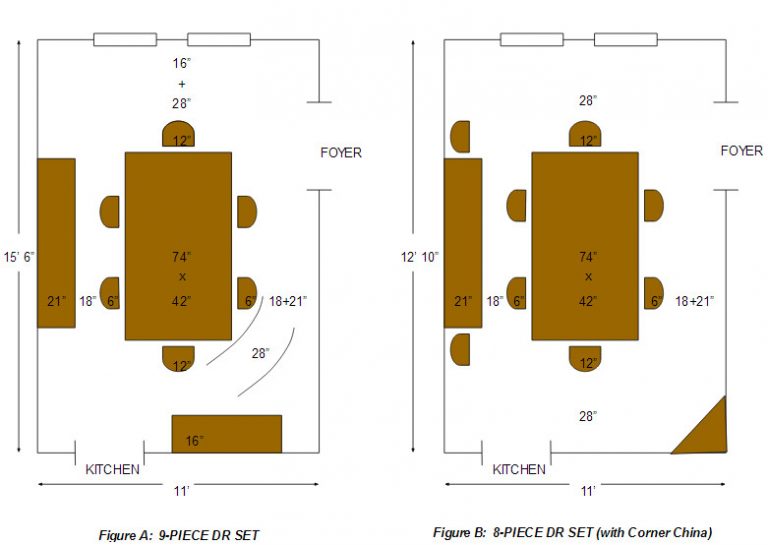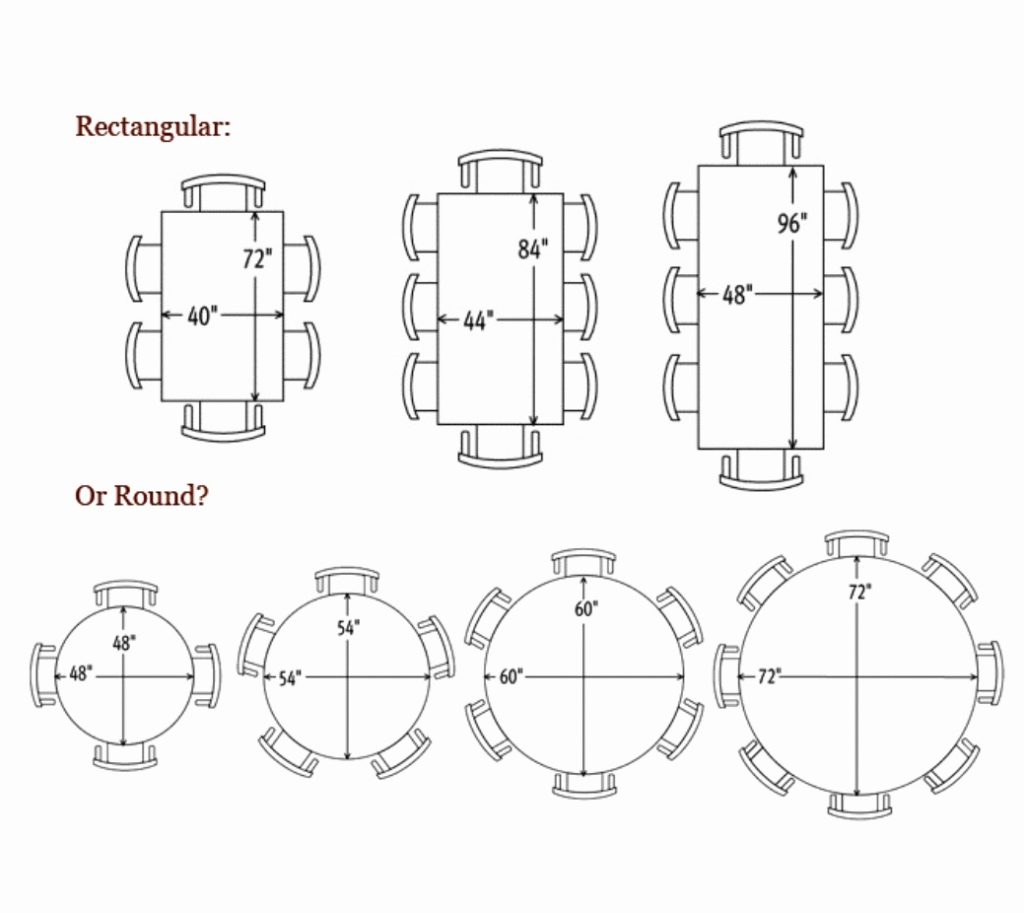
When we were young, a sofa and a coffee table in front of the TV often acted as our dining room. But as we grew older, the need to have a more “formal” dining place for entertaining and/or family dinners suddenly started to make sense.
If this is the first time that you are shopping for dining room furniture, and because buying a new dining room set is a major decision, here is a list of 6 things you need to consider while shopping.
1) Space
The first thing to think about is the space you have for the table. I suggest that you draw out the room dimensions first. You will need to allow 42 to 46 inches (107 to 117 centimeters) between the table and the wall edge in order for a person to rise comfortably and push their chair away from the table.
2) Traffic Flow
Review the traffic patterns by considering where traffic enters and exits the room. Does the hostess have room to move around the table? Do you plan to serve “family-style” or will the guests serve themselves? If family
and friends are getting up and down you will require more traffic space.
The following sketch shows you how to calculate traffic flow.

3) Table Size
In order to accommodate serving dishes, you will need to look at a table that is a minimum of 36 inches to 42 inches (91 to 107 centimeters). If you don’t need a large table now but would occasionally like one for those special occasions, you may want to consider a table with one or more extensions (leaves).
Your guests need to be comfortable. You need to allow 24 inches (60 centimeters) of table space per person around the table in order to ensure your friends and family can enjoy their time around the table together. For extra elbow room allow for 30 inches (76 centimeters). How many people usually sit at the table? Here’s a useful drawing to save you some time:

4) Table & Chair Height
Table height is another consideration. Most tables are 30 inches (76 centimeters) in height. The height of the chair seat is generally about 18 inches (46 centimeters) from the floor. In most cases the distance from the tabletop to the seat of the chair should be at least 12 inches (30 centimeters).
Tables over 30 inches, commonly known as pub-height tables (42 inches) or counter-height tables (36 inches), are also available from many manufacturers. These tables are particularly suitable for more casual environments.
Just like tables, chairs are available in various heights (for obvious reasons). Most collections will offer two heights – the highest chairs can also be used for lunch counters.
5) Table & Chair Design
Another thing to review is the leg style of the table. The selection of a custom table allows you to select what leg style suits your style preference as well as your entertaining needs. You will want to note that the selection of a pedestal style base gives you more seating space since none of your guests will have to struggle with the table legs.
When it comes to choosing your chairs, you must consider not only your preferred style but also comfort, especially if you like to spend long hours chatting around the table. The back of the chair, as well as the seat width, will determine how comfortable the chair is.
A bench is another very popular option that is perfectly suited to small spaces since it can slide completely under the table when not in use.
Depending on your lifestyle, the type of cover you choose for your chair (or bench) will be equally important. Wood, plastic and metal chairs, or one with leather covers, are ideal for young families, whereas a fabric cover, especially plain, will require more care. Fortunately, you can now find high performance fabrics that are stain resistant and easy to clean.
6) Multifunctionality
Is there some adjacent space nearby such as counter or bar height area in an open concept kitchen/dining that can be used for serving dishes or even to seat additional guests? Sometimes the younger generation likes the feel of being part of the event but appreciates the freedom that sitting at a bar stool brings.
Speaking about serving dishes – you will want to consider a server or open buffet to have those extra plates and platters readily available for that uncle who insists on a healthy second helping.
Console tables and occasional furniture are also great ways to maximize the service area of your dining room. Once the focal point of more formal spaces, the hutch over a buffet is almost no longer used.
Dining room furniture will always remain a personal choice influenced by factors such as lifestyle, style preferences, budget, space available and the number of years we wish to keep our furniture. Whatever the case, don’t be afraid to think outside the box when choosing finishes or combining unexpected elements.
Bon appetit!
Rebecca, Your Furniture Expert

